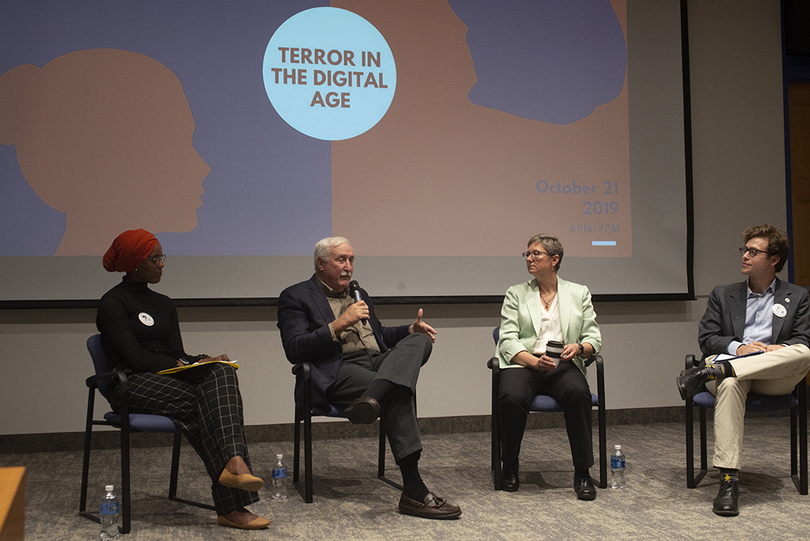Remembrance Scholars host “Terror in the Digital Age” panel

Sophia Faram | Staff Photographer
Remembrance Scholar Hassina Adams (left), Maxwell professor Sean O'Keefe, iSchool professor Jennifer Stromer-Galley and Remembrance Scholar Adam Bayer spoke at the panel.
Syracuse University professors and Remembrance Scholars hosted a panel on Monday discussing how terrorism has evolved in an increasingly digital age.
The discussion was led by Remembrance Scholars Hassina Adams and Adam Bayer. Professors Sean O’Keefe, of the Maxwell School of Citizenship and Public Affairs, and Jennifer Stromer-Galley, of the School of Information Studies, joined the panel.
Panelists discussed how cyberattacks have grown more prevalent with the rise of human dependence on technology. Stromer-Galley said these are digital systems with critical infrastructures.
“The whole trajectory (of cyberterrorism) is to make a statement, to be chaotic, to be disruptive and to instill fear,” O’Keefe said. “The more they are feared in the shadows, never identifying themselves, there is no accountability for what they do.”
There are many forms of terrorism, usually characterized by violence to push a social or political agenda, Stromer-Galley said. Meanwhile, those identified as terrorist actors may see themselves as pushing an agenda that would otherwise be silenced.
O’Keefe said it is easier for both formal and informal groups, such as ISIS and white supremacists, to argue their grievances with the network of data in daily life.
“They now can reach out to a much broader collective than anyone could have dreamed of in 1988, when the Pan Am bombing occurred,” he said.
About 300,000 jobs in cybersecurity in the United States are unfilled because not enough people are earning degrees with knowledge on the subject, Stromer-Galley said. This presents a potential national security threat, she said.
O’Keefe said it doesn’t take more than a couple hundred people to launch a social media disruption like the one seen in the 2016 presidential election.
“This doesn’t require an in-depth degree of expertise,” O’Keefe said. “What is unique is why we have so many positions unfilled in the United States to deal with these kinds of situations because of the technical talent necessary.”
The 9/11 attacks led to a more aggressive move in Congress for civilian surveillance and data collection, Stromer-Galley said. Watchlists used by the United States government created a dilemma where national safety was placed against privacy.
The argument for increased government observation is to deter terrorist actors, and it has impeded these potential actions, O’Keefe said.
But it comes at the cost of privacy. He said the public values their own freedom to privacy, which makes citizens less likely to favor government surveillance.
“There are some fundamental challenges here, and there are no easy solutions,” Stromer-Galley said. “We need to ask ourselves: ‘What do we trade off when we increase surveillance for security purposes and who potentially loses the most?’”




